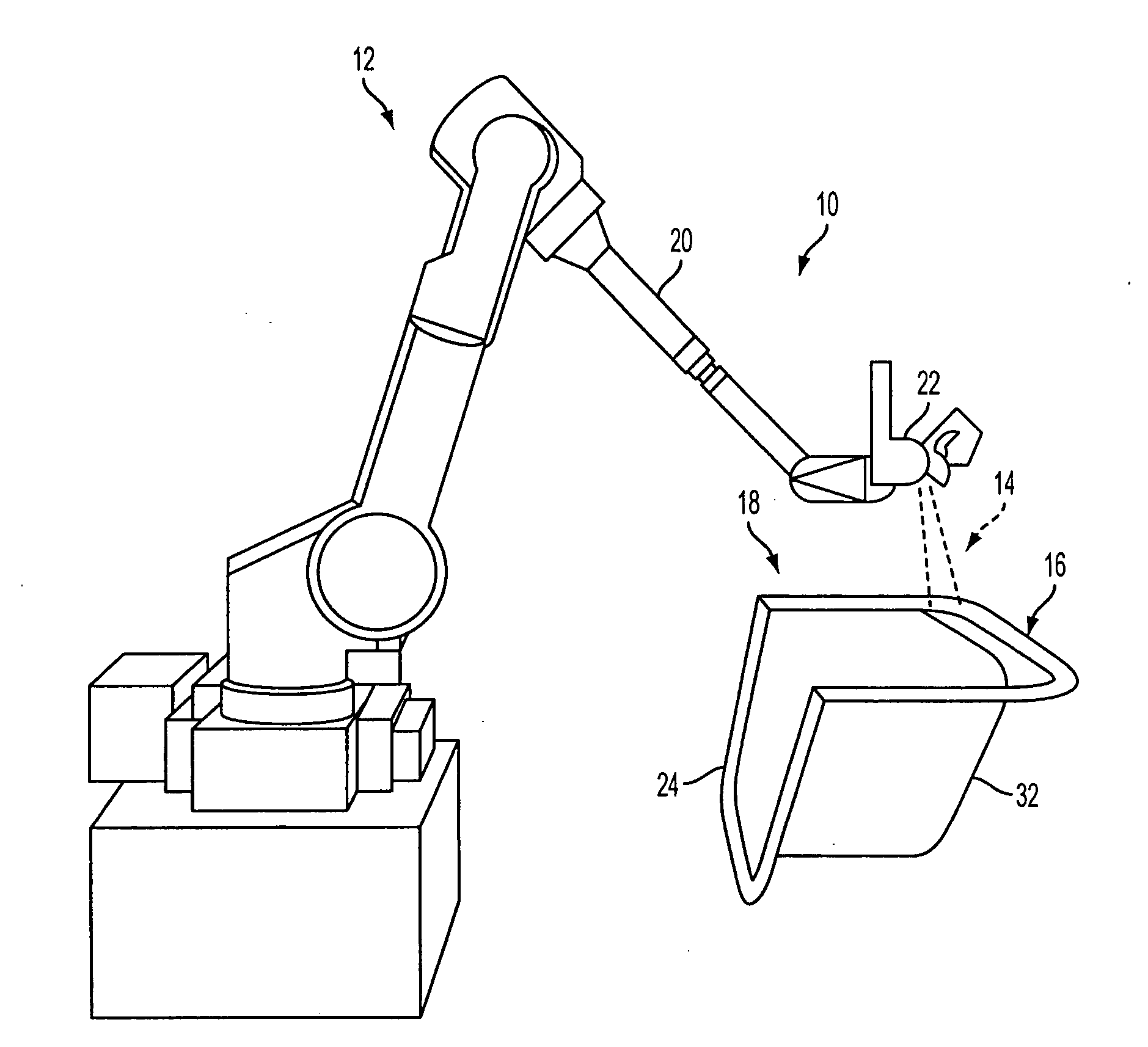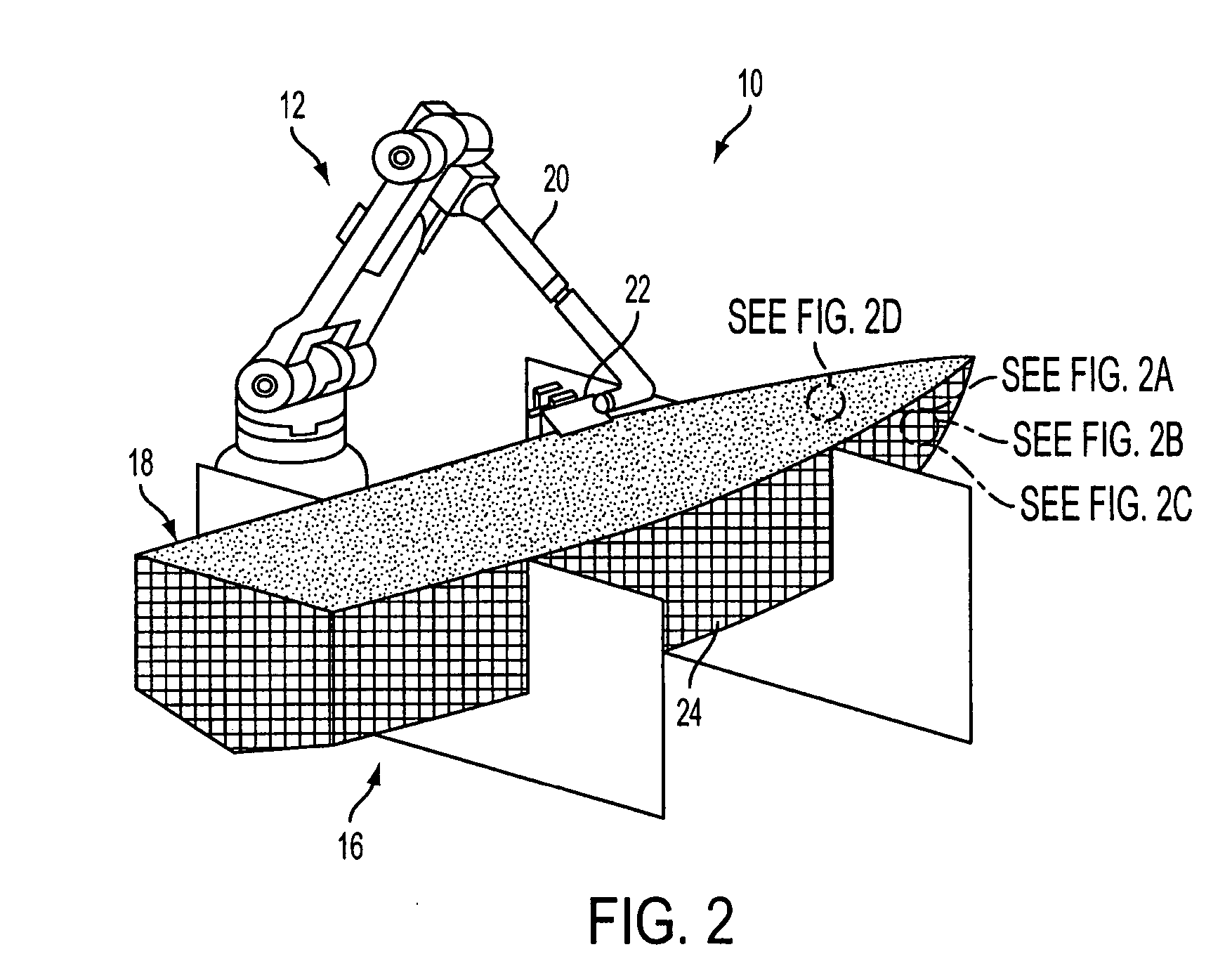Apparatus and method for making preforms in mold
a technology of apparatus and mold, applied in the direction of manufacturing tools, combs, buttons, etc., can solve the problems of composite material weak spots where the reinforcement is lacking, polymer materials tend to be much less strong than metal, and do not meet the strength requirements for metal replacement, etc., to achieve the effect of reducing cost and high strength structural preforms
- Summary
- Abstract
- Description
- Claims
- Application Information
AI Technical Summary
Benefits of technology
Problems solved by technology
Method used
Image
Examples
Embodiment Construction
[0044] This invention is described below with reference to formation of a preform for use in the marine industry to construct fiberglass reinforced articles, such as a motor box for a boat, a hatch, deck, deck section or a boat hull. However, it is to be understood that this is an exemplary embodiment only and that the method can be applied in various applications in which high strength structural members are used. For example, a preform made in accordance with the disclosed embodiments of the invention could be used in the automotive, aircraft, or building industries or as a component of household goods, such as appliances. Further, although specific examples of materials are provided herein, any suitable material can be used.
[0045] As seen in FIG. 1, a preform making assembly 10 used to practice a method in accordance with the invention includes a materials applicator 12 that applies the preform material mixture 14 to a support surface 16 to create preform 18. The term preform in...
PUM
| Property | Measurement | Unit |
|---|---|---|
| Pressure | aaaaa | aaaaa |
| Structure | aaaaa | aaaaa |
| Length | aaaaa | aaaaa |
Abstract
Description
Claims
Application Information
 Login to View More
Login to View More - R&D
- Intellectual Property
- Life Sciences
- Materials
- Tech Scout
- Unparalleled Data Quality
- Higher Quality Content
- 60% Fewer Hallucinations
Browse by: Latest US Patents, China's latest patents, Technical Efficacy Thesaurus, Application Domain, Technology Topic, Popular Technical Reports.
© 2025 PatSnap. All rights reserved.Legal|Privacy policy|Modern Slavery Act Transparency Statement|Sitemap|About US| Contact US: help@patsnap.com



